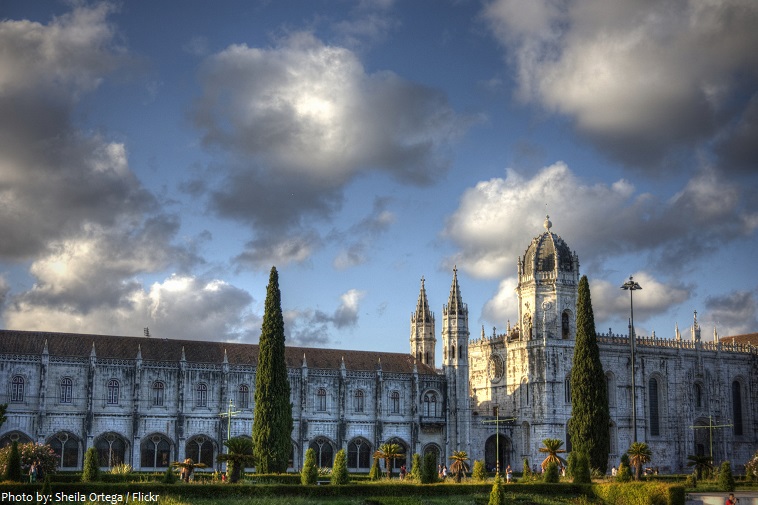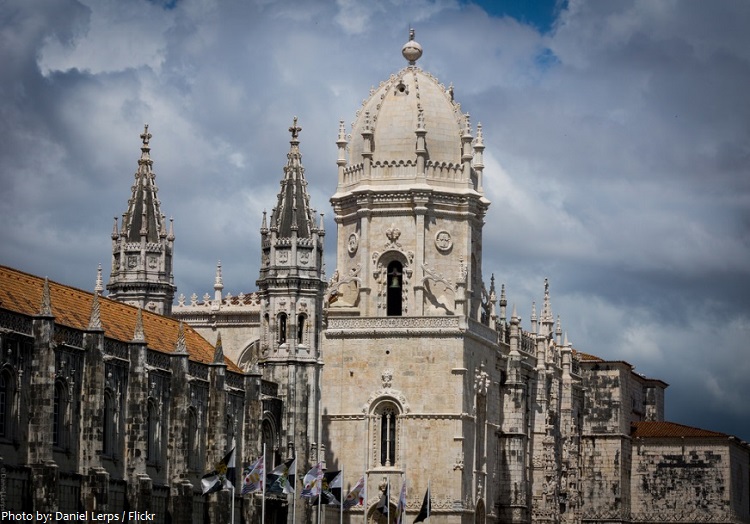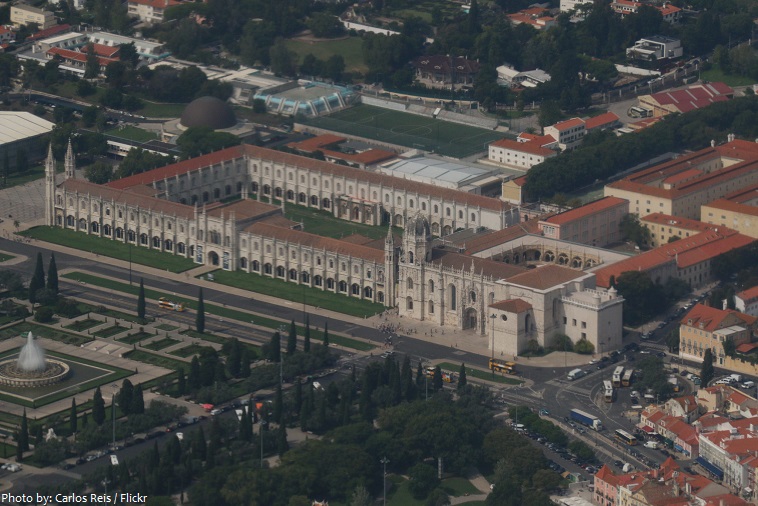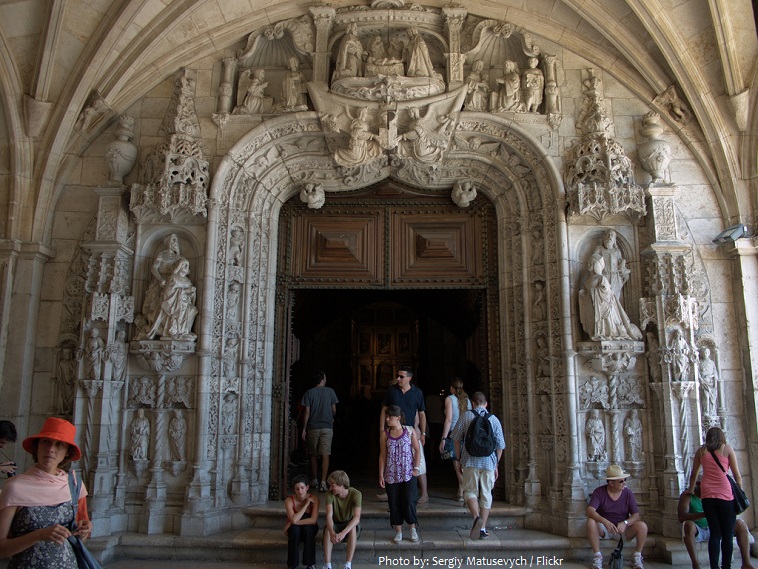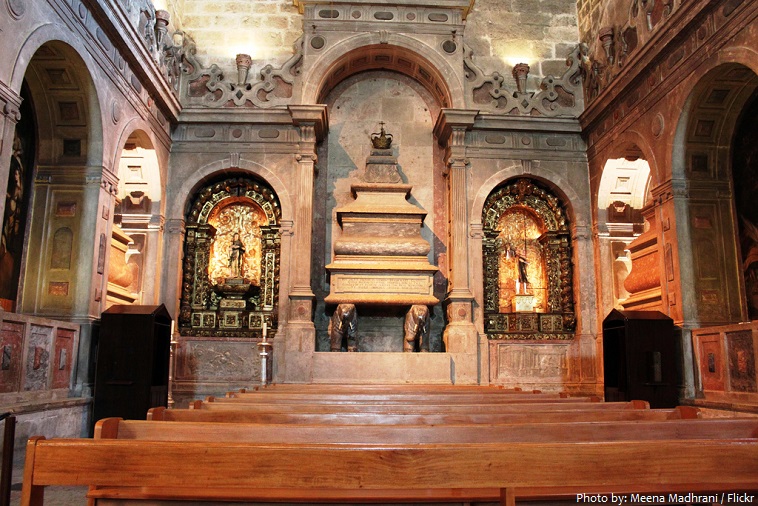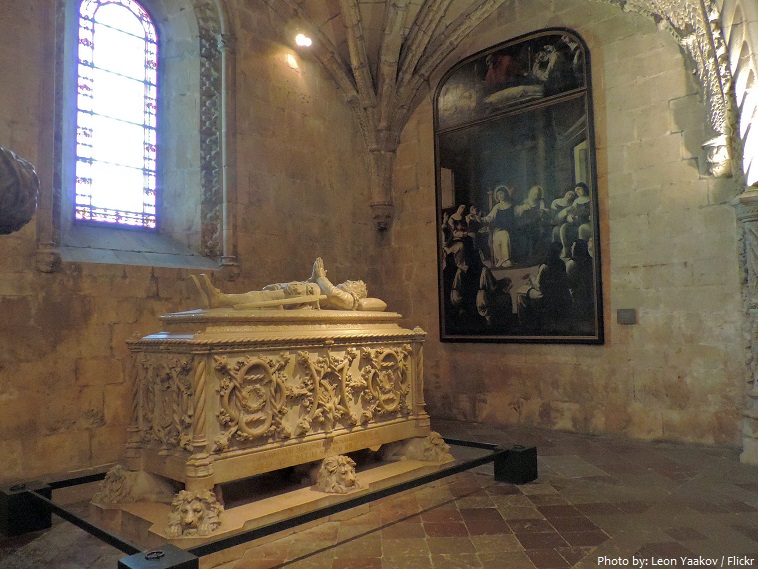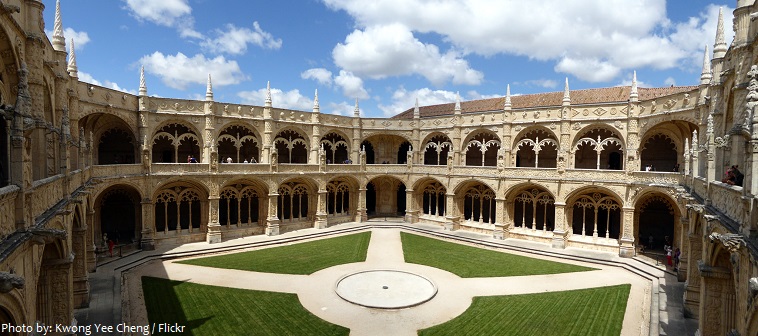The Jerónimos Monastery or Hieronymites Monastery is a highly ornate monastery that is situated in the Belem district of western Lisbon.
The Jerónimos Monastery is along with the Tower of Belém, one of the most visited sites in Lisbon.
The monastery is one of the most prominent examples of the Portuguese Late Gothic Manueline style of architecture in Lisbon.
It was classified a UNESCO World Heritage Site, along with the nearby Tower of Belém, in 1983.
The monastery was founded by King Manuel I in celebration of successful Portuguese voyages around the world.
In 1496, King Manuel I (1495–1521) petitioned the Holy See for permission to construct a monastery as thanksgiving to the Virgin Mary for the successful voyage of Vasco de Gama to India.
The Jerónimos Monastery replaced the church formerly existing in the same place, which was dedicated to Santa Maria de Belem.
The construction of the monastery and church began on 6 January 1501, and was completed 100 years later.
The project was funded by treasures from explorations in Africa, Asia, and South America, as well as a stiff tax on the Portuguese-controlled spice trade with Africa and the East.
The king hired French architect Diogo de Boitaca (1460-1528), who was later succeeded by João de Castilho (1475-1552) of Spain, Diogo de Torralva (c.1500-1566), and Jerónimo de Ruão (1530-1601).
The monastery was designed in a manner that later became known as Manueline: a richly ornate architectural style with complex sculptural themes incorporating maritime elements and objects discovered during naval expeditions, carved in limestone.
Manuel I selected the religious order of Hieronymite monks to occupy the monastery, whose role it was to pray for the King’s eternal soul and to provide spiritual assistance to navigators and sailors who departed from the port of Restelo to discover lands around the world.
The monks continued to perform this role for over four centuries until 1833. At this time, religious orders were dissolved and the monastery was abandoned.
On 16 July 1604, Philip of Spain (who ruled after the Iberian Union) made the monastery a royal funerary monument, prohibiting anyone but the royal family and the Hieronymite monks from entering the building.
The monastery withstood the 1755 Lisbon earthquake without much damage: only the balustrade and part of the high choir were ruined, but they were quickly repaired.
The main entrance to the monastic church is the south portal, designed by João de Castilho. This shrine-like portal is large, 32 meters (105 ft) high and 12 meters (39 ft) wide, extending two stories. Its ornate features includes an abundance of gables and pinnacles, with many carved figures standing under a baldachin in carved niches, around a statue of Henry the Navigator, standing on a pedestal between the two doors.
Although of smaller dimensions then the southern doorway, this is the most important door to the Jerónimos because of its ornamentation and its position in front of the main altar. This western portal is a good example of the transition from the Gothic style to Renaissance. It was built by Nicolau Chanterene in 1517.
Diogo de Boitaca laid the foundations for this three-aisled church with five bays under a single vault, a clearly marked but only slightly projecting transept and a raised choir. The hall church layout is composed of aisles and nave that are of equal height.
The chancel was ordered by Queen Catherine of Austria as the final resting place for the royal family. The royal tombs rest on marble elephants and are set between Ionic pillars, topped by Corinthian pillars. The tombs on the left side of the choir belong to king Manuel I and his wife Maria of Aragon, while the tombs on the right side belong to King João III and his wife Queen Catherine of Austria.
Within the church, in the lower choir, are the stone tombs of Vasco da Gama (1468–1523) [photo below], and of the great poet and chronicler of the Age of Discoveries, Luís de Camões (1527–1570). Both tombs were sculpted by the 19th-century sculptor Costa Mota in a harmonious neo-Manueline style. The mortal remains of both were transferred to these tombs in 1880.
An overwhelming sense of tranquility prevails at the double-tier cloisters. This is one of Lisbon’s greatest sightseeing treats, and one of the most celebrated examples of Manueline architecture in Portugal. Diogo de Boltaca initiated the construction of the cloisters in the early 16th century, but it is João de Castilho who was responsible for most of the graceful stonework that decorates the arches and balustrades, a confection of delicate tracery and richly carved religious and nautical symbols that appear almost weightless in their harmony and ornamentation.
The Jerónimos Monastery was secularised on 28 December 1833 by state decree and its ownership transferred to the charitable institution, Real Casa Pia de Lisboa.
In an addition added to the monastery after the 1850 restoration, the Museu Nacional de Arqueologia (National Archaeological Museum) and the Museu da Marinha (Maritime Museum) were established (in the west wing).
When Portugal joined the European Economic Community, the formal ceremonies were held in the cloister of the monument (1985).
Two major exhibitions took place at the monastery during the 1990s: “Four Centuries of Paintings”, in 1992; and the exposition “Leonardo da Vinci: A Man at the World’s Scale, A World at the Scale of Man”, in 1998 (which included the Leicester Codex, on temporary loan from Bill Gates).
At the end of the 20th century, remodelling continued with conservation, cleaning and restoration, including the main chapel in 1999 and the cloister in 1998–2002.
On 13 December 2007, the Treaty of Lisbon was signed at the monastery, laying down the basis for the reform of the European Union.
